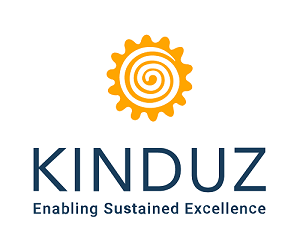Fortune 500 Corporation │ Oil And Gas │ India
Brought to you in collaboration of KINDUZ Consulting.
This is a case story from Petrocham Oil Refineries Ltd (PORL) (name changed). This story communicates three key messages. First, that defining problem statement is very important. Second, that it is good to validate root cause and the solutions by collecting data or performing experiment. Third, that you can alter negative perceptions by adopting an objective and data driven approach.
Background of the project
MS (Motor Spirit) which is also known as Petrol or Gasoline, is one of the major moving petroleum product of the refinery and has a major role in pushing up the GRM (Gross Refinery Margin).
MS is produced by blending and mixing of various steams from different unit at a defined ratio in blend header. Blend setup for every MS tank is done at a panel where online monitoring of blending is done by a person. After this, supply of streams is started through the blend header. These streams are mixed at blend header and then deliver to an assigned tank. After mixing, a very small quantity part of the mixed streams goes to an online MS analyser which checks whether different parameters of MS are within range. What are the different parameters? Well, we have RON (Research Octane Number), density, sulphur content, colour (Yes! Colour!) and other 13 to 14 parameters. A small sample from filled MS tank is checked by the quality control department of refinery. The quality control department checks if the parameters are within range. If lab certifies the sample okay, then MS from that tank can be dispatched to marketing terminals. If sample is not okay, then tank needs to be re-blended which leads to financial losses and depletion of reliability of refinery in the market.
During the period Apr’13 – Mar’14, only 54.8% of MS batches on an average in a month are getting Ok’d in first sampling and 45.2% of batches are manually blended to meet the desired quality which results in deterioration of blend Header reliability, delay in despatching the batches for sales, building up of inventory at Refinery.
Another key challenge was that the lab results (obtained by the quality control department) and the online analyser results hardly matched. If the results could match, then the blending team will definitely have higher probability of producing ‘right quality’ of MS in the first time. The team, and all the senior leadership at this refinery, had three hypotheses for the scenario at hand: Either the online MS analyser was faulty, or the Lab instruments were faulty or both. However, many of the key leaders at PORL had the perception that it were the Lab instruments and therefore the quality control team that needed to improve.
So, as a Lean Six Sigma Green Belt project, the problem was given to a team of 2 Petrocam employees (Mr. Sohan and Mr. Mohan). Let’s see what the team found out.
Voice of Customer (VOC)
The team started with capturing VOC from all the internal customers. They undertook Gemba walk and spoke to various functions like maintenance, Oil Movement & Storage (OM&S), quality control officers, Shift-in charge and managers to understand the challenges. Below is the summary of VOC:
Maintenance Department: “Lab results are not accurate and there is no corrective action from OM&S department against analyzer reading”
OM&S Department: “Flow meter of all streams are not properly calibrated. That’s why analyser is not predicating correct value.”
Quality Control Department: “Analyzer is not predicating the parameters value correctly and circulation of streams in MS tank and handing of blend header sample is not proper.”
The team also met their Six Sigma project coach.
The coach asked, “Do we have the data of lab results and analyzer results for all the parameters?”
Mohan replied, “Yeah, it is available and easily accessible.”
Team collected the data and met the coach again.
The inference from the data was that in the last six months all parameters, except RON, were within the defined ranges. This did not come as a surprise as one hand other parameters had a acceptable values within a range, RON had a target 91.5, not more and not less.
Team learned that VOC statements from all the officers and managers were very subjective and did not convey the exact problem. It is good to collect data and analyze it to verify the problem. Team learned the importance of defining problem objectively and not subjectively.
Converting VOC to CTQ (Critical to quality)
After digging more into the issue, team prioritized on two CTQ’s. One was “% of MS tanks okay on first sampling in a month” and other was “RON value of 91.5 for every MS tank”.
Graphical Summary of “% of MS tanks okay on first sampling in a month”

Figure 1: A graphical representation of “% of MS tanks okay on first sampling in a month”. P value: 0.484 => Data is normal => Mean is right metric to summarize the data
To define the baseline of the first CTQ, team collected data on “% of MS tanks okay on first sampling in a month”.
From the Minitab graphical summary shown above, the team inferred that on an average the percentage of MS tanks that were okay on first quality inspection was 54.8% per month. This means that if Petrocham produced 100 tanks of MS in a month, only 55 tanks were okay on first sampling done by the quality control team. For rest of the 45 tanks, Petrocham had to re-blend the tank. And this was an additional effort, cost and delay of dispatch of the tank contents by 2 to 3 days!
The Minitab graphical summary also helped to define a realistic target for the team. Notice that the 95% confidence interval for mean is between 43.063% and 66.573%. Now for this project the target was to increase the percentage of MS tanks that get okayed on first sample. Hence if they could achieve more than 66.573%, they would have statistically significant improvement. Hence, the target was set at 67%.
Probable causes
Team further brainstormed on the possible causes for the problem with all the stakeholders and came out with few probable causes as listed below.
- Problems with measurement system of Petrocham lab instruments
- Improper sample handing
- Online analyzer is not working properly
- Lack of monitoring of blend header operations
- Tank sample is not representative of the Tank
- Analyzer is not working properly
- Improper tank circulation
- Deviation in RON testing procedure with ASTM standard
Validation of Lab’s result
Team performed experiment to check accuracy of Lab results. A Gage R&R study to check the repeatability & reproducibility of lab results was conducted with 3 samples of MS and 3 lab operators. The operators were given every sample twice and that too randomly. Team collected the data of this Gage R&R study and analyzed it with the help of Minitab. Team inferred, as is shown in the below graph, that repeatability and reproducibility were under limits and measurement system was acceptable.

Figure 2: A graphical representation of Gage R& R study results. % contribution for total Gage R&R is 4.93 and % Study Variation for total Gage R&R is 22.20 => Repeatability and Reproducibility is under limits and measurement system is acceptable.
P value for all samples is greater than 0.05 which means that the lab instrument doesn’t have any bias and its RON results deviates to both sides (more than target RON and less than target RON) of the target RON.

Figure 3: A graphical representation of Gage R&R study results. P value: 0.496 => Lab instrument does not have any bias.
To get more confidence, team spoke to the QC Manager and found that an analysis was done by a globally recognized vendor. The vendor came with some samples to verify the repeatability and reproducibility of lab results. The mean of their RON sample and results from Petrocam refinery lab were within international standard limit.
Team discussed their findings with the coach.
Coach: “Is it possible to compare lab results of Petrocham with any other refinery?” Team agreed to perform an experiment.
Team collected a sample from MS tank and checked it in laboratories of four other refineries. After analyzing the data, team deduced that there was a little difference in results and that the results were within standard limits. So the lab results of Petrocam refinery were acceptable.
Now that the team was sure about the accuracy of lab results, they decided to focus on the analyzer.
Validation of Online analyzer’s result
Team did an experiment to check the repeatability of analyzer and collected the value of RON by analyzer and lab. After analyzing the data, team got to know that repeatability of analyzer is not under the limit. To further dig it, team did an experiment and calculated RON value of different samples of MS by using different models in the analyzer (It was possible to change the model by which Analyzer predicted values of RON of a sample). Analyzer is provided with a model which has a collection of spectrum of the different samples. Analyzer matches the tank sample to its spectrum and predicts a RON value. Team added spectrum of more samples to the current models and created an updated model. Team analyzed the experiment result in Minitab and found that updated model was more reliable than the old model.

Figure 4: I-MR chart of RON difference between Lab and analyzer for different models of online MS analyzer
Team came to coach and explained the issue. The coach asked, “Why are we getting good results from updated model?”
Team said, “Old model does not consists spectrum from special streams.”
Coach said, “And what are those streams?”
Team hadn’t found out. So coach suggested to collect data of RON deviation and it with streams. As mentioned at the start of this story, MS is made through blending of different intermediate products. When we say streams, we mean all intermediate product streams that feed into a common header that goes into the blending tank. Team collected the data and found out that two streams which comes from CCR (Continuous Catalytic Regeneration) reformer unit and FCCU unit (Fluidized Catalytic Cracking Unit) have significant impact on RON deviation.
Team collected the data of reactor temperature of both units and checked relationship with RON difference between online analyzer and lab results. It was very clear, as shown in the graphs, that RON difference is increases as the reactor temperature is decreases.

Figure 5: A graphical representation of the correlation between RON difference and reactor temperature of CCR by scatter plot

Figure 6: A graphical representation of correlation between RON difference and reactor temperature of FCCU by scatter plot
Team went to process and checked the ground condition to find out the root cause. Team found out that reactor temperature of two streams unit were changing very frequently and analyzer didn’t have those models fed into it. And that was the root cause of online analyzer not giving right results.
When this finding was presented to the leadership of PORL they realized that they had an invalid negative perception of the quality control team all along.
Solution
Team recommended an update of the model of the Analyzer so that it improves the spectrum. It was also recommend that new models should cover the range of spectrum that were derived from actual data of PORL. This will help to have higher reliability of online analyzer.
Results
Post implementation of recommendation, team collected data for six months. The % of MS tanks okay on first sampling in a month had improved to 69.3%. This was 2% more than the target of 67%. However, they were yet to smoothen the process and achieve business plan target of 70% for the next financial year. Other tangible benefits from the project were as follows:
- Delivery of MS batches on time to customers which enables us to meet the production targets
- Increase customer satisfaction
- Reducing re-blending cost of MS batches


